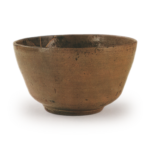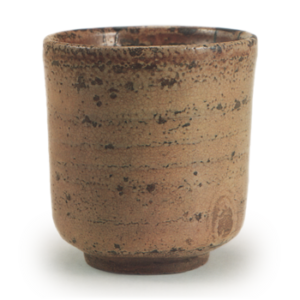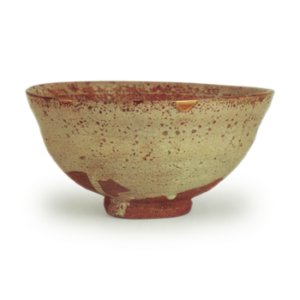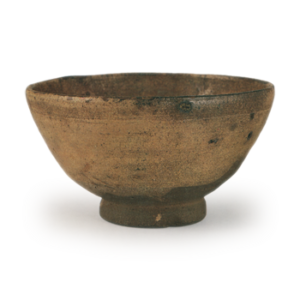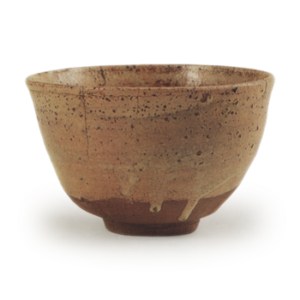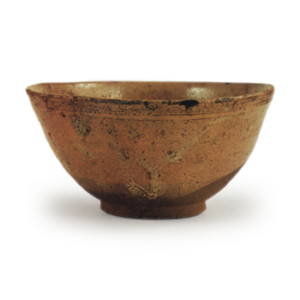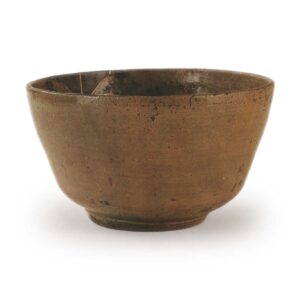
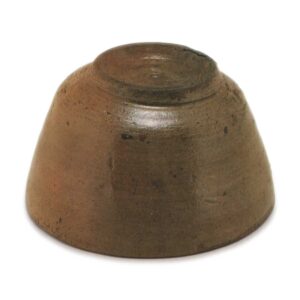
Name: Edo Kora, Edo Totoya
Restoration specialty
Height: 7.0-7.3cm
Diameter: 12.2-12.5cm
Outer diameter of foot ring: 5.8-6.0cm
Height: 0.5cm
On the inside of the paulownia wood box, the characters “Tō” (east) and “Kōra” (Korea) are written in black ink by the calligrapher Kobori Enshū on the right and left shoulders respectively, but the meaning of the inscriptions is not known. Also, on the lid of the black lacquered outer box, the characters “Toko-Kara Edo-Kara Tomo Edo Tomo” are written in gold powder, but it is thought that this outer box was passed down to the Sumitomo family in later generations, and it is certain that this tea bowl was not used as a toto-ya in the Enshu period. In fact, in the transcription of the ‘Enshu Gokuramoto-cho’ (a record of Enshu’s tea utensils), it is referred to as ‘Toko-koma’, and in the records of a tea party held on August 21st, 1736 by the Matsudaira family (the feudal lords of the Hizen Shimabara domain), who had inherited the tea bowl from the Kobori family, it is referred to in the same way as ‘Toko-koma’. It is thought that the reason this tea bowl is called the “Edo Totoya” is probably due to a mistake, as there is another tea bowl called the “Edo Totoya” from the Enshu period. The shape of the upper tea bowl is clearly different from the general Totoya, but the glaze is similar to that of the Totoya, and in particular it is similar to the “Rikyu Totoya”.
The foot ring is quite large in comparison to the diameter of the bowl, and although it has been cut down low, the foot ring is slightly cut deeper, so although it is low, it has a bamboo joint-like shape. The inside of the foot ring is cut in a similar way to the “Rikyu Tōya”, and a gentle hood appears in the center. There is no tea pool in the interior, and it is almost flat, with a gentle loop around the side. The shape of the tea bowl is unique, and it could be said that it is somewhat of an oddity as a Koryo tea bowl. Or perhaps it was precisely this that Enshu sought to highlight.
The glaze is thin overall, and the blue and red colors alternate, but the red has a hint of yellow, giving it a subtle charm, while the blue is similar to the glaze on irabo ware, with a lead-like color. The glaze is not particularly rich in color, but the glaze is soft and has a deep flavor. In other words, this is a tea bowl that gives the impression of a calm depth, despite its outwardly ordinary appearance. The clay is sticky and fine, and there is a gold repair on the rim. There is also a crack in the foot ring.
It was formerly owned by Kobori Enshu and is listed in his “Kura-cho” (catalogue of his possessions), but later passed to the head of the Hizen Shimabara clan, Matsudaira, and remained in the family for many years. On December 8th, 1918, it was sold at auction to the Sumitomo family for 31,110 yen.

